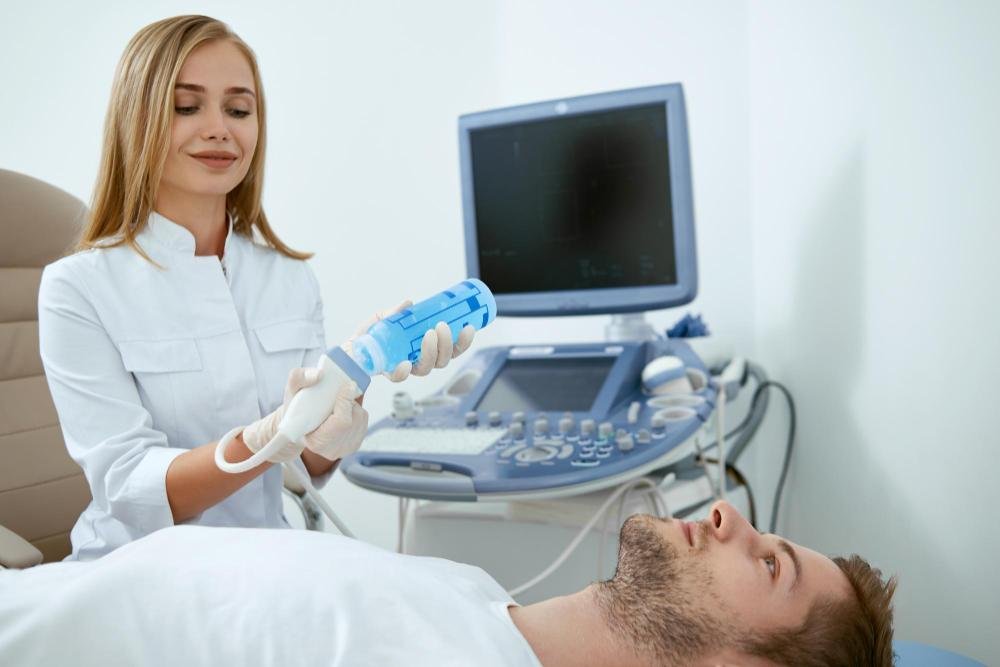Medical imaging plays a crucial role in diagnosing and managing various health conditions. Among the most commonly used diagnostic tools are Ultrasound, MRI (Magnetic Resonance Imaging), and CT Scan (Computed Tomography). While all three help doctors “see” inside the body, they work differently and serve distinct purposes. Understanding their differences can help you feel more confident and prepared when your physician recommends a scan.
Whether you're visiting a general physician or a specialist, chances are you’ve encountered the need for an imaging test. If you're searching for a reliable ultrasound clinic near me, it’s good to know when an ultrasound is preferred over an MRI or CT scan and vice versa.
What Is an Ultrasound?
Ultrasound uses high-frequency sound waves to generate images of organs, tissues, and even unborn babies inside the womb. It's completely non-invasive and free of radiation, making it the preferred method for prenatal care and other soft tissue evaluations.
Common Uses:
- Pregnancy monitoring
- Examining liver, kidneys, uterus, and ovaries
- Checking gallbladder or bladder conditions
- Evaluating blood flow with Doppler ultrasound
Benefits of Ultrasound:
- No radiation exposure
- Safe for pregnant women and children
- Real-time imaging
- Cost-effective and widely available
Looking for a trustworthy ultrasound clinic in Noida? This city offers several advanced diagnostic centers equipped with the latest ultrasound technology, delivering fast and accurate results for a wide range of conditions.
What Is an MRI?
Magnetic Resonance Imaging (MRI) uses powerful magnetic fields and radio waves to produce high-resolution images of internal body structures, especially soft tissues. Unlike X-rays and CT scans, it does not involve radiation, which makes it a safer option for repeated use.
Common Uses:
- Diagnosing brain and spinal cord conditions
- Evaluating soft tissue injuries (e.g., ligaments and cartilage)
- Detecting tumors and abnormalities
- Imaging joints and organs
Advantages of MRI:
- Excellent image clarity for soft tissues
- No exposure to harmful radiation
- Useful for detailed, complex diagnoses
- Multi-angled imaging capability
Although MRI is highly accurate, it can be more expensive and time-consuming compared to other scans. Some patients may also feel claustrophobic during the scan due to the enclosed machine structure.
What Is a CT Scan?
CT (Computed Tomography) scans combine multiple X-ray images taken from different angles to create a comprehensive, 3D image of the inside of the body. It’s often used in emergency settings because of its speed and accuracy.
Common Uses:
- Detecting internal injuries after trauma
- Diagnosing infections or tumors
- Monitoring the effectiveness of treatments
- Evaluating lung, chest, and abdominal conditions
Benefits of CT Scan:
- Fast and efficient
- Provides a clear view of bones and internal organs
- Widely available in hospitals and clinics
- Ideal for trauma cases and internal bleeding detection
CT scans do involve exposure to low doses of ionizing radiation, so they are typically recommended only when necessary.
Ultrasound vs MRI vs CT: Key Differences
| Feature | Ultrasound | MRI | CT Scan |
| Technology Used | Sound waves | Magnetic fields & radio waves | X-ray imaging |
| Radiation Involved | No | No | Yes |
| Best For | Soft tissues, pregnancies | Brain, joints, soft tissue | Trauma, bone injuries, internal organs |
| Speed | Fast (15–30 mins) | Moderate (30–60 mins) | Very fast (5–30 mins) |
| Cost | Affordable | Expensive | Moderate |
| Safety | Very safe | Safe (except for some implants) | Low risk with some radiation |
When to Choose Each Scan?
Choosing between an ultrasound, MRI, or CT scan depends on your symptoms and the part of the body being examined:
- Ultrasound is best for pregnancy, gallstones, kidney issues, and soft tissue analysis.
- MRI is ideal for brain and spinal imaging, joint problems, and certain cancers.
- CT scan is preferred in trauma cases or when quick, detailed images of organs and bones are needed.
For instance, if you’re pregnant or have abdominal pain, your doctor might recommend visiting an ultrasound clinic near me for immediate imaging. On the other hand, a neurologist may suggest an MRI to evaluate persistent headaches or nerve issues.
Finding the Right Diagnostic Center
It's important to choose a clinic that not only has the right equipment but also employs experienced radiologists. Many top-tier centers offering MRI and CT scans also operate as ultrasound clinics in Noida, ensuring that all imaging services are available under one roof.
When looking for a dependable imaging facility, prioritize:
- Board-certified radiologists
- Latest equipment and technology
- Quick appointment scheduling
- Transparent pricing
Typing “ultrasound clinic near me” into a search engine can help you locate centers nearby, but make sure to read reviews and verify certifications before booking your test.
Additionally, if you live or work in Noida, you'll find many reputed Best ultrasound clinic in Noida that provide same-day reports, female sonographers, and packages tailored for women’s health, pregnancy, and abdominal scans.
Conclusion
In conclusion, ultrasound, MRI, and CT scans each offer unique advantages based on the medical concern at hand. Ultrasound is safe, quick, and perfect for pregnancy and soft tissue concerns. MRI provides unmatched clarity for complex conditions without using radiation, while CT scans are indispensable in emergency and trauma care due to their speed and detailed imaging.
When your doctor recommends an imaging test, understanding these differences will empower you to make informed choices. Whether you’re searching for a trusted ultrasound clinic near me for a pregnancy checkup or need an ultrasound clinic in Noida for a routine abdominal scan, make sure to choose a center that prioritizes both technology and patient care.



